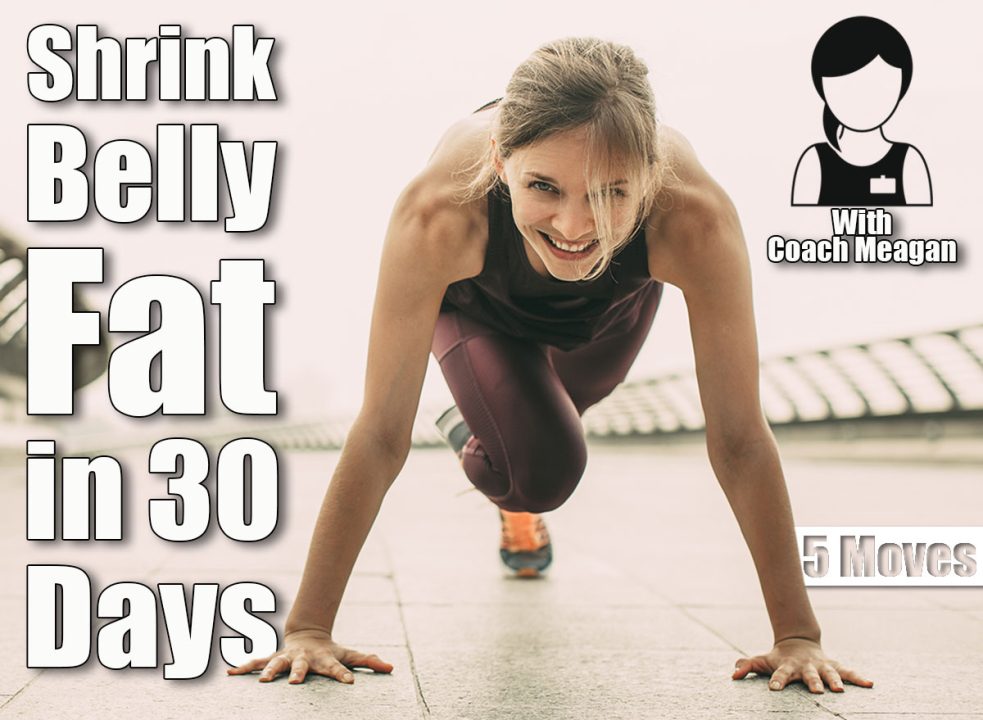
At a certain point in life, the way your body stores fat shifts. Research shows that after age 40, hormonal changes, slower metabolism, and natural muscle loss make belly fat more common, and harder to lose. Furthermore, a recent study in Nutrition, Metabolism and Cardiovascular Diseases found that abdominal fat, particularly visceral fat, increases your risk of heart disease, type 2 diabetes, and other chronic conditions.
That makes shedding unwanted belly fat much less about appearance and more about boosting good health, mobility, and long-term quality of life. The good news is ETNT is here to help. We spoke with Meagan Kong, CPT, AlterMe’s Head of Fitness, who says, “There’s no magic, quick fix for belly fat, but pairing classic moves with consistent habits can strengthen your midsection and boost energy. These exercises are simple, proven, and effective when practiced regularly.”
Here, we break down five of the most effective classic exercises you can use to target your core, strengthen supporting muscles, and help melt away that stubborn belly fat for good. Additionally, each move is approachable, requires no fancy equipment, and can be adjusted to suit any fitness level, regardless of where you’re at. Read on to learn more. And when you’re finished, be sure to check out This 10-Minute Morning Standing Routine Builds More Strength After 50.
5 Classic Exercises to Shrink Your Stomach in 30 Days
Brisk Walking
Shutterstock
Brisk walking is one of the most underrated exercises for weight loss. According to a review published in Nutrition, Obesity, and Exercise, regular moderate-intensity aerobic activity like brisk walking can significantly reduce visceral fat, the type that surrounds your organs. That’s because walking torches calories, reduces stress (which impacts fat storage), and is low-impact so it’s easy on your joints.
How to do it:
- Head outdoors or use a treadmill.
- Walk briskly for 20 to 30 minutes at least five days per week.
- Strive to walk at a pace that makes conversation slightly challenging but not impossible.
- Gradually increase duration or incline as fitness improves.
Beginner Modification: Start with 10-minute walks and build up in 5-minute increments.
Common Mistakes to Avoid: Walking too slowly, slouching forward, or skipping warm-up and cool-down stretches.
Standing Side Crunches
This exercise strengthens your obliques (side abs), which can help improve stability and posture. Core strength has been associated with lower injury risk and better functional movement.
How to do it:
- Stand tall with feet hip-width apart.
- Place your hands behind your head, elbows wide.
- Draw your right rib toward your right hip in a side crunch.
- Return to standing and switch sides.
- Do 3 sets of 12 to 15 reps per side.
Beginner modification: Keep hands on your hips instead of behind your head for less strain on your neck.
Common Mistakes to Avoid: Jerking your torso, pulling on your neck, or leaning forward instead of sideways.
Bodyweight Squats
Shutterstock
Squats are one of the most fundamental strength moves you can do. This compound exercise engages large muscle groups (glutes, quads, and hamstrings), which helps burn calories and boost metabolism for blasting away belly fat.
How to do it:
- Stand with feet shoulder-width apart.
- Sit your hips back and bend knees, lowering until thighs are parallel to the floor (or as far as comfortable—stop if you feel any pain).
- Keep your chest upright and knees in line with your toes.
- Drive through your heels to return to standing.
- Perform 3 sets of 12 reps.
Beginner modification: Hold onto a chair or perform sit-to-stand squats from a chair.
Common Mistakes to Avoid: Allowing your knees to cave inward, rising with your toes, or rounding your back.
Plank with Shoulder Taps
Shutterstock
While the traditional plank is an essential core stabilizing exercise, adding shoulder taps increases the intensity by forcing your body to resist rotation by engaging your abs, obliques, and lower back even more.
How to do it:
- Get in a high plank with your hands under your shoulders and keep your body in a straight line.
- Tap your left shoulder with your right hand while keeping hips steady.
- Return to the plank position and switch sides.
- Perform 3 sets of 8 to 10 taps per side.
Beginner modification: Do the move from a modified plank with your knees on the ground.
Common Mistakes to Avoid: Rocking your hips side to side or rushing through the taps with poor form.
Mountain Climbers
Shutterstock
Mountain climbers are fantastic for fat loss as they combine aerobic exercise with deep core engagement. A 2025 BMC study found that high-intensity bodyweight moves like this improve fat oxidation and metabolic health.
How to do it:
- Begin in a high plank with hands under your shoulders.
- Drive your right knee toward your chest.
- Quickly switch legs as if you’re running in place.
- Continue alternating at a steady pace.
- Do 3 rounds of 15 to 20 seconds.
Beginner modification: Slow down your pace or place your hands on a bench to reduce strain on your lower back.
Common Mistakes to Avoid: Letting your hips sag, bouncing too much, or losing plank alignment.

